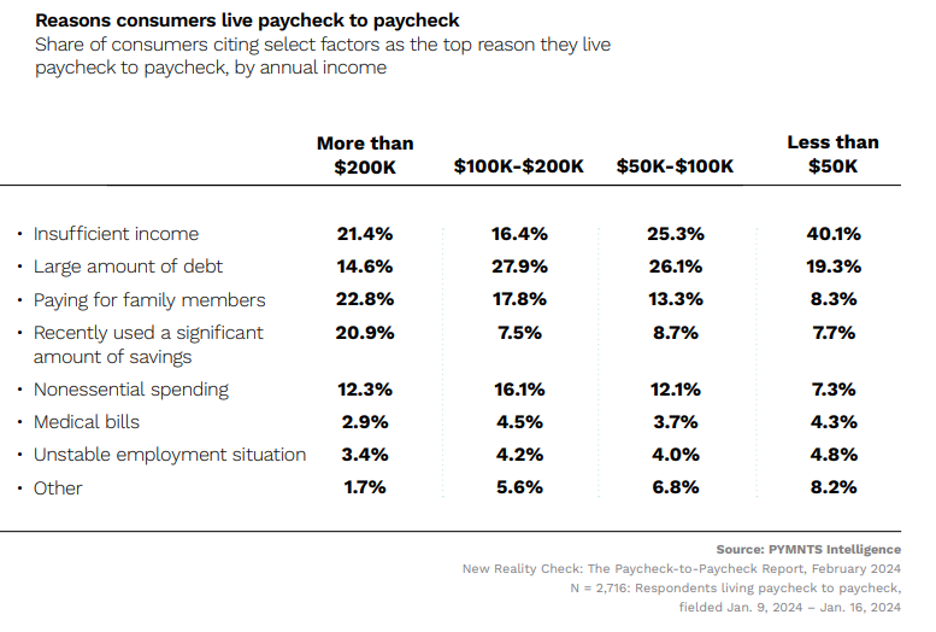
The good news is the U.S. economy added more than 300,000 jobs last month and many U.S. workers are now earning higher wages.
The not-so-great news is many Americans continue to struggle to pay their bills — including even those earning six figures each year.
According to PYMNTS Intelligence’s latest edition of its “Paycheck-to-Paycheck Report: Why One-Third of High Earners Live Paycheck to Paycheck,” six in 10 consumers struggle to get by. And high wages alone don’t necessarily offer relief. Nearly half of consumers earning north of $100,000 annually say they are living paycheck to paycheck.
The report drew on insights that 4,285 U.S. consumers shared with us, as well as supplementary economic data. It found that 62% of all consumers now live paycheck to paycheck, including 36% of those whose annual incomes exceed $200,000.
PYMNTS Intelligence has tracked paycheck-to-paycheck data for nearly four years. The latest findings show that, overall, the percentage of consumers identifying as living paycheck to paycheck has increased 2 percentage points over last year’s findings.
According to the most recent data, roughly three-quarters of low-income consumers (those earning less than $50,000 per year) — and about two-thirds of middle-income consumers (earning between $50,000 and $100,000 annually) now live paycheck to paycheck. The share of high-income respondents (earning more than $100,000 each year) also increased to 48%. As mentioned, more than one-third of those who earn $200,000 or more annually said they, too, are just getting by.

Consumers across income brackets say housing costs (29%), grocery and household expenses (20%) and regular and personal outlays (21%) absorb the lion’s share of their monthly earnings.
And even though the costs of items such as housing and food continue to climb, those outlays alone do now account for the financial difficulties many American consumers now feel.
As the chart above shows, both low-income earners and those making more than $200,000 annually said insufficient earnings are the main reason they survive from one paycheck to the next. Forty percent of those earning less than $50,000 annually say low wages are to blame. And while one-quarter of middle income earners and 16% of high-income earners say the same, around one in five consumers earning more than $200,000 blame insufficient incomes for their just-getting-by economic status.
Large amounts of debt are another leading culprit, especially for high-income earners (28%) and middle income earners (26%). Nearly 23% of those earning more than $200,000 each year said covering the expenses family members run is another leading contributor to their plights, which is something they have in common with 18% of those one bracket down.
And while medical bills are cited as a leading reason for crushing U.S. debt, our survey found among paycheck-to-paycheck consumers — across all incomes — it accounted for only a small percentage of their financial woes.
As welcome as the news is that more workers are employed and many of them are now earning higher wages, no more than 5% of consumers of any wage bracket indicated unstable employment was a top reason for them living paycheck to paycheck. And, as the report found, many consumers — especially high earners — are making poor choices that contribute to shaky financial standings.
Yet, there is no denying that if the cost of essentials such as housing and groceries continue to rise every month, the financial plight many Americans face will likely continue for the foreseeable future.